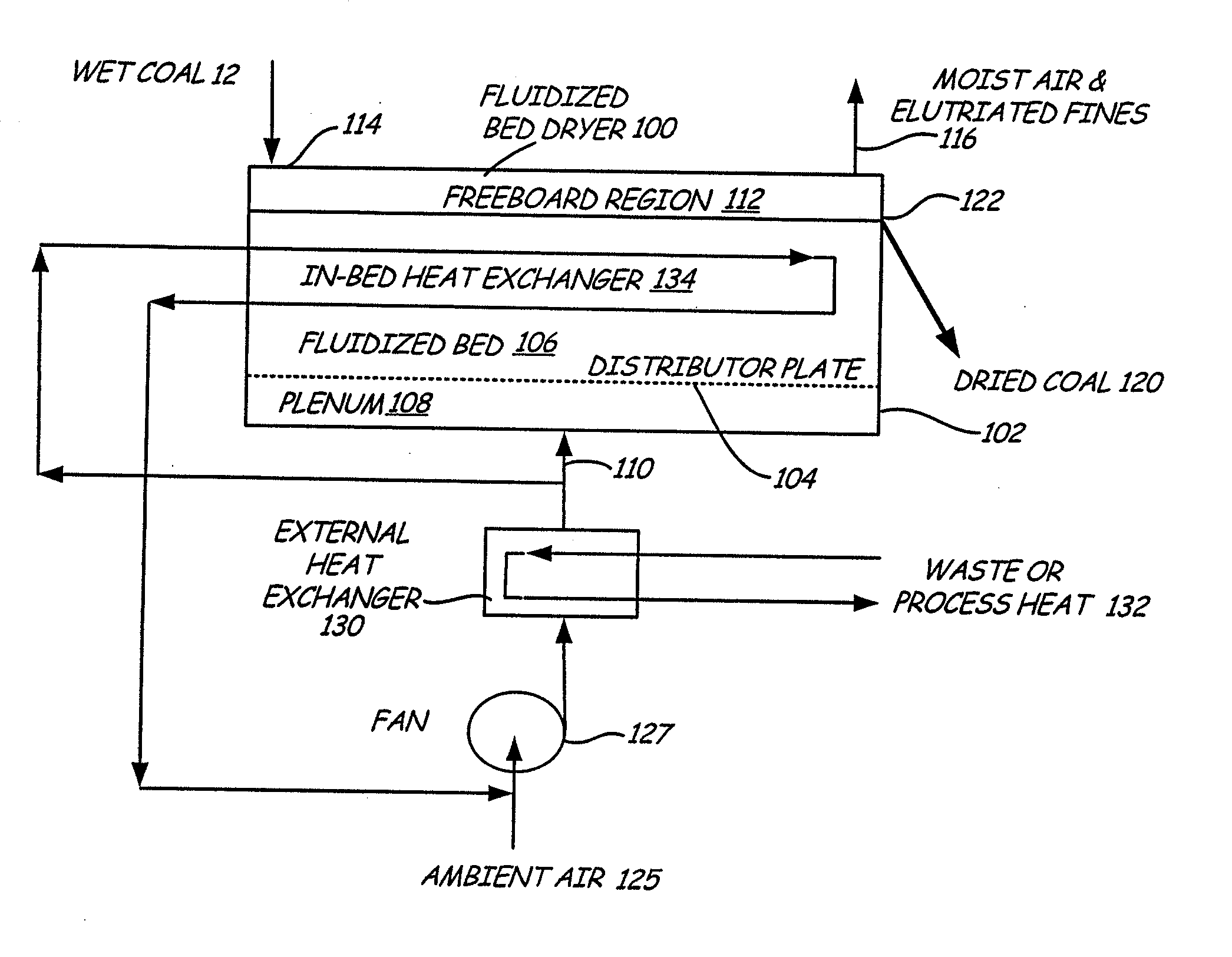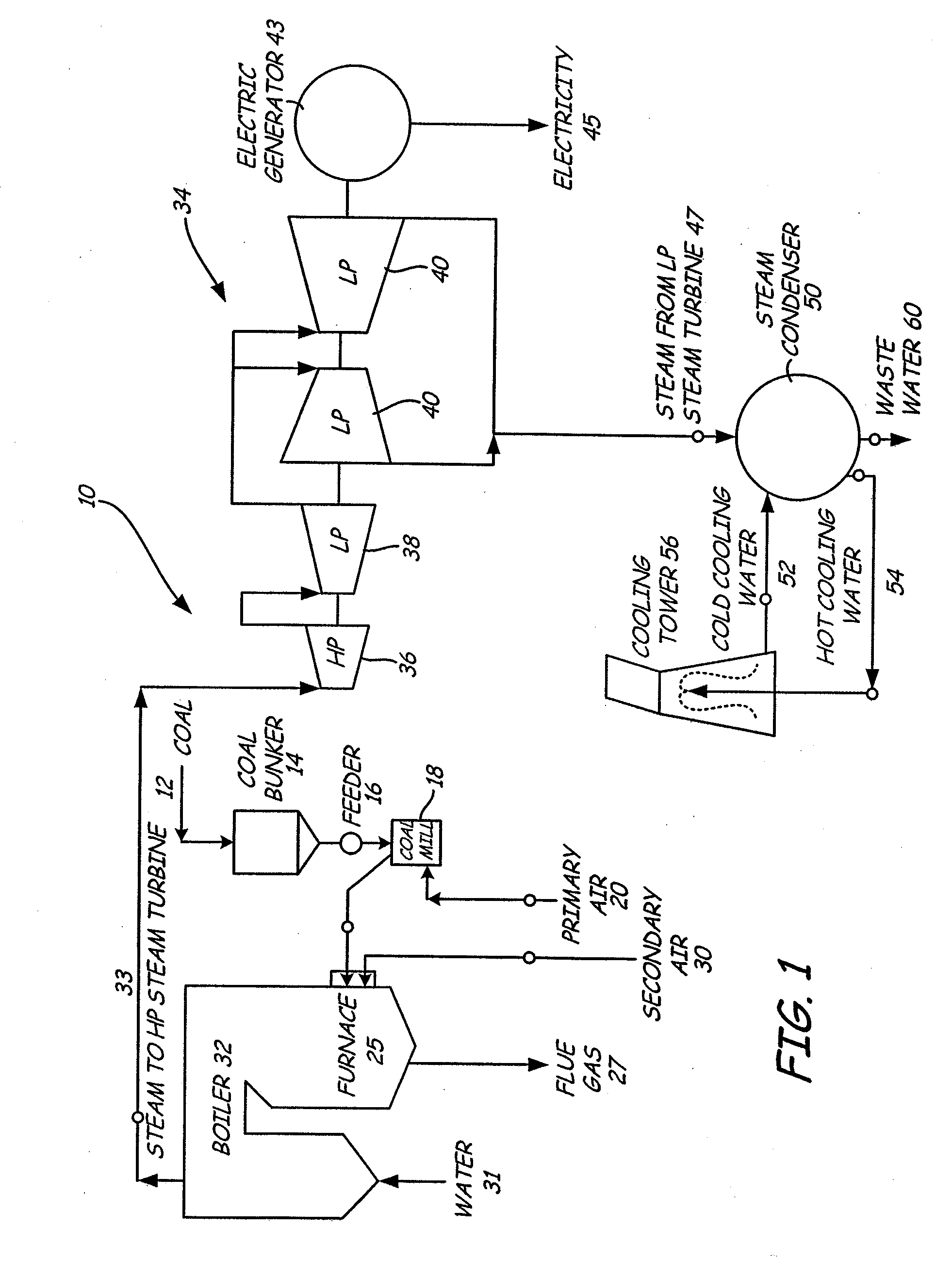Apparatus and method of separating and concentrating organic and/or non-organic material
a technology of organic and non-organic materials, applied in the direction of gas current separation, lighting and heating apparatus, furnaces, etc., can solve the problems of not being able to separate coal particles containing organic sulfur from coal particles largely free of sulfur, affecting the quality of the separation process, and affecting the separation effect of organic and/or non-organic materials, so as to reduce the amount of contaminated particulates, increase the amount of usable non-contaminated, and process evenly and quickly
- Summary
- Abstract
- Description
- Claims
- Application Information
AI Technical Summary
Benefits of technology
Problems solved by technology
Method used
Image
Examples
Embodiment Construction
[0043] The invention includes an apparatus for, and a method of, separating particulate from denser and / or larger particulate containing contaminants or other undesirable constituents, while concentrating the denser and / or larger material and contaminants for removal and / or further processing. The method of separation utilized in the present invention capitalizes on the physical characteristics of the contaminants. In particular, it capitalizes on the difference between the specific gravity of contaminated and non-contaminated material. The contaminants can be removed from a majority of the material by separating and removing the denser and / or larger material. The present invention uses a fluidization method of separating the contaminated denser and / or larger material from the non-contaminated material.
[0044] Although the present invention may be used in a variety of applications such as in farming, and / or manufacturing, the following discussion will describe its use in power plant...
PUM
 Login to View More
Login to View More Abstract
Description
Claims
Application Information
 Login to View More
Login to View More - R&D
- Intellectual Property
- Life Sciences
- Materials
- Tech Scout
- Unparalleled Data Quality
- Higher Quality Content
- 60% Fewer Hallucinations
Browse by: Latest US Patents, China's latest patents, Technical Efficacy Thesaurus, Application Domain, Technology Topic, Popular Technical Reports.
© 2025 PatSnap. All rights reserved.Legal|Privacy policy|Modern Slavery Act Transparency Statement|Sitemap|About US| Contact US: help@patsnap.com



